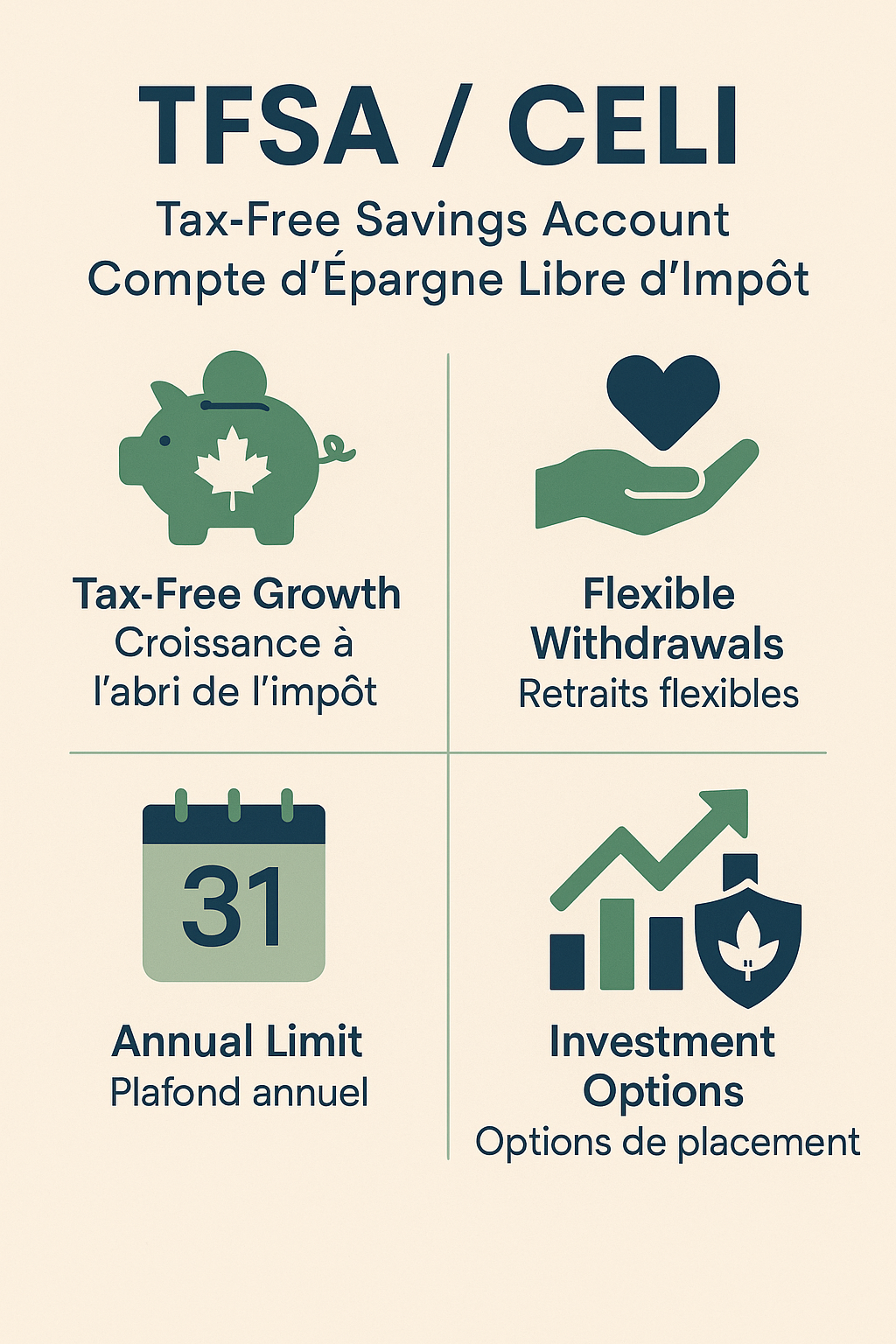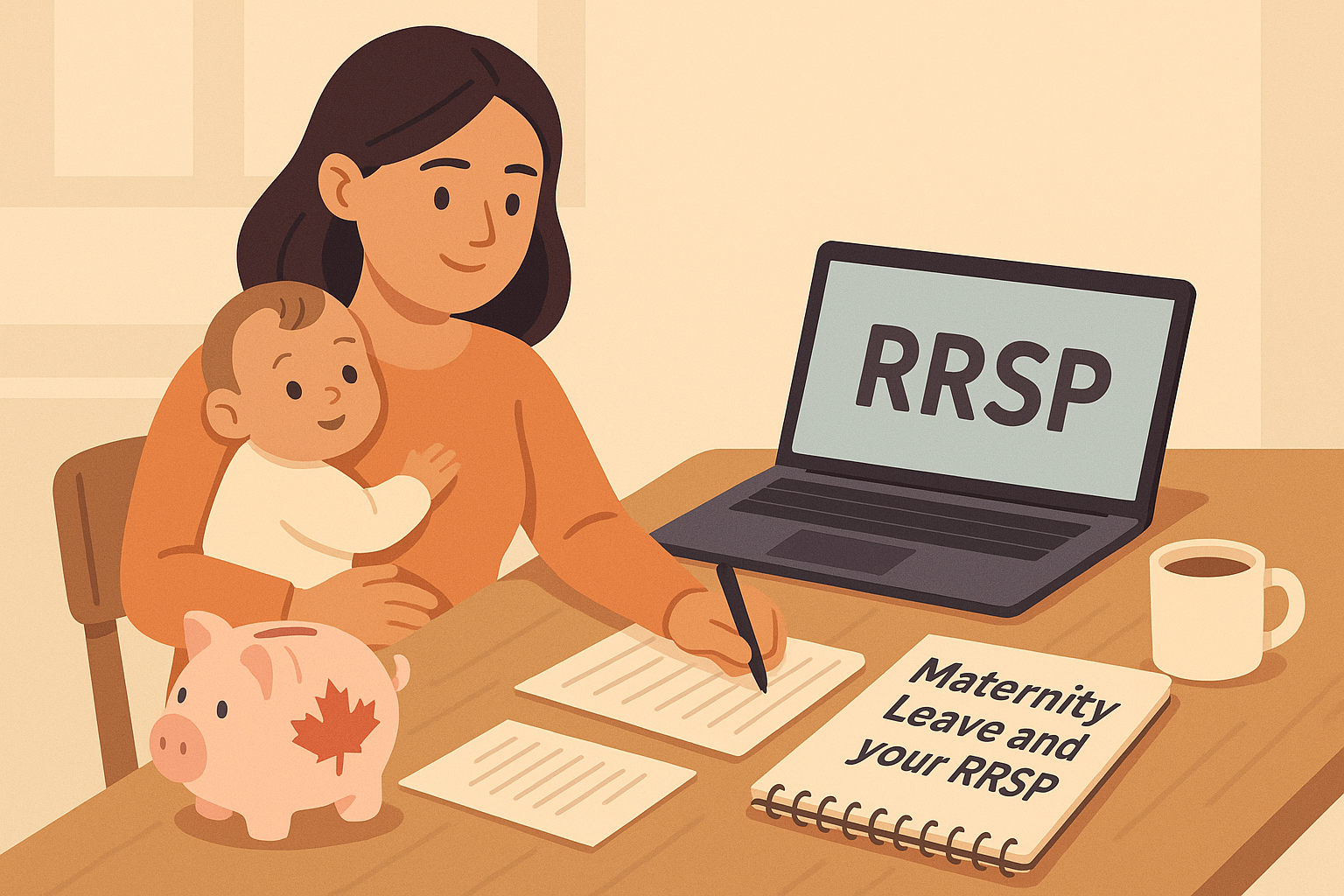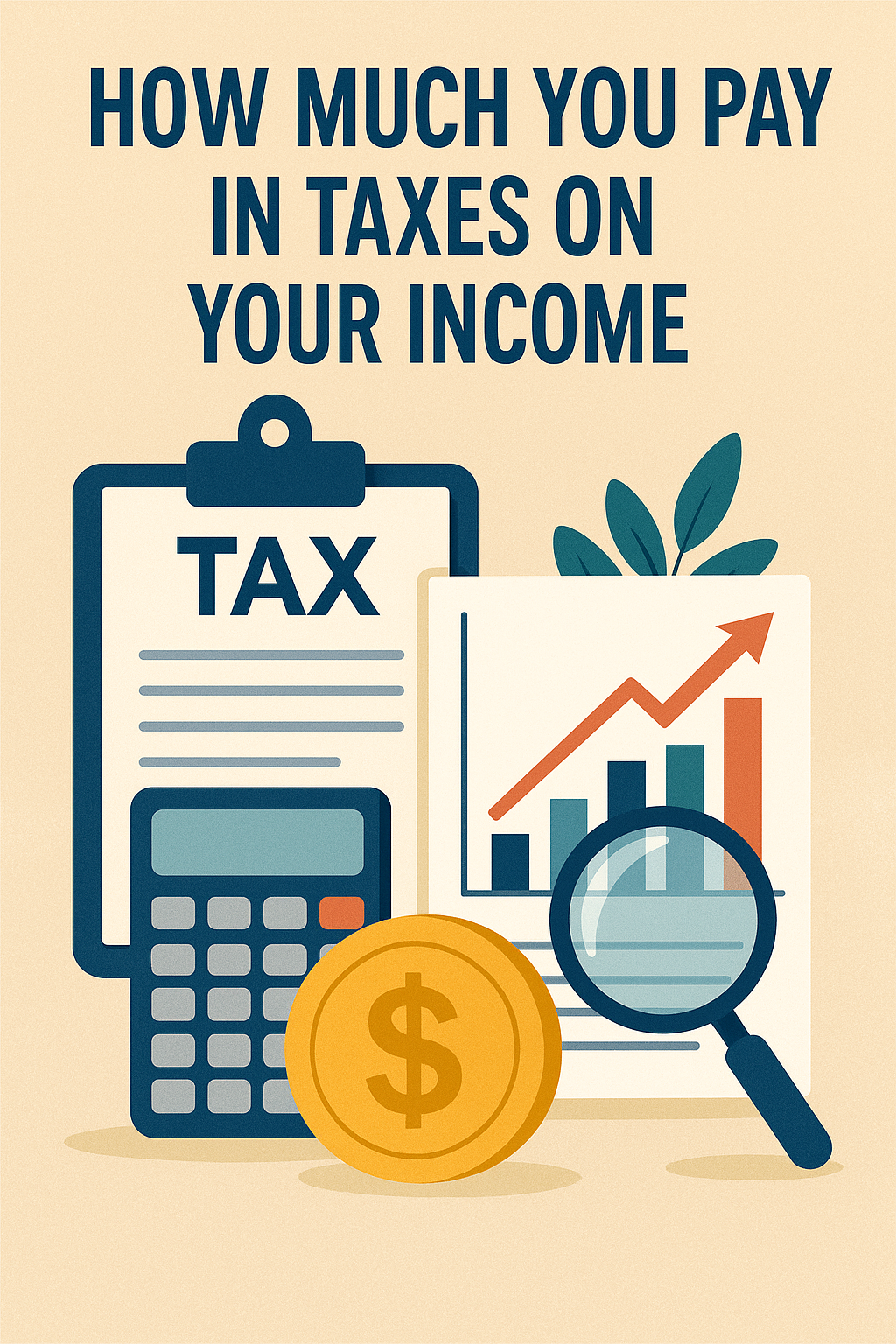The Tax-Free Savings Account (TFSA) is a registered savings vehicle introduced by the Canadian government in 2009. Since then, it has become an indispensable tool for Canadians seeking to grow their wealth. The TFSA is designed to empower Canadians to save and invest without the burden of taxes on investment income, such as interest, dividends, or capital gains, nor on withdrawals.
This distinct advantage sets it apart from traditional savings accounts, where interest earnings are taxable, and Registered Retirement Savings Plans (RRSPs), where withdrawals are subject to income tax.
This guide updates key figures for 2025, and presents a clear roadmap to understand, utilize, and optimize your TFSA.
Disclaimer
While I try to ensure the accuracy of the information contained on this blog, I do not guarantee it. I’m not a licensed financial adviser nor a lawyer, so take this blog only as an educational resource and my personal thoughts and opinions. No liability is assumed for losses or disappointments due to the information provided. It is important that you always exercise your own judgement when making decisions that can impact your wallet, and your life!
I. Eligibility
To open a TFSA, you must meet three primary criteria:
- Canadian Resident: you must be a resident of Canada.
- Valid Social Insurance Number (SIN): A valid SIN is required to open and contribute to a TFSA.
- Age Requirement: you must be at least 18 years of age.1 It is important to note that while the age of majority varies by province or territory (e.g., 19 in British Columbia, Nova Scotia, New Brunswick, Newfoundland and Labrador, Northwest Territories, Yukon, and Nunavut), TFSA contribution room begins accumulating in the year you turn 18, regardless of your provincial age of majority. This means that if you turn 18 in a province where the age of majority is 19, you will still accrue contribution room for that year and can carry it forward indefinitely until they are legally able to open an account.
Special rules apply to non-residents of Canada. While a non-resident with a valid SIN can technically open a TFSA, they are generally not permitted to contribute to it while maintaining non-resident status without incurring a penalty. Any contributions made while a non-resident will be subject to a 1% penalty tax for each month the contribution remains in the account. Thus, as a non-resident, you cannot accrue new TFSA contribution room for any full calendar year you reside outside of Canada.
II. Contribution Limits
The TFSA operates with an annual dollar limit, which is periodically adjusted for inflation and typically rounded to the nearest $500.
For both 2024 and 2025, the annual TFSA dollar limit is set at $7,000. Your total TFSA contribution room is cumulative. It is calculated by adding the annual dollar limit for the current year, any unused contribution room carried forward from previous years, and the total amount of any withdrawals made from the TFSA in the previous calendar year.
This cumulative nature means that even if you have never contributed to a TFSA since its inception, your contribution room continues to grow each year, regardless of whether you file an income tax return or have earned income.
For instance, a Canadian resident who was 18 or older in 2009 and has remained a resident since, but has never contributed to a TFSA, would have accumulated a total cumulative contribution room of $102,000 as of January 1, 2025.
The following table provides a clear historical overview of the annual and cumulative TFSA contribution limits since the program’s inception. This data is particularly valuable for individuals looking to understand their potential total contribution capacity, especially if they have not consistently maximized their TFSA contributions over the years.
Table 1: Annual and Cumulative TFSA Contribution Limits (2009-2025)
| Year | Annual Contribution Limit | Cumulative Limit (assuming 18+ in 2009, never contributed) |
|---|---|---|
| 2009 | $5,000 | $5,000 |
| 2010 | $5,000 | $10,000 |
| 2011 | $5,000 | $15,000 |
| 2012 | $5,000 | $20,000 |
| 2013 | $5,000 | $25,500 |
| 2014 | $5,000 | $31,000 |
| 2015 | $10,000 | $41,000 |
| 2016 | $5,500 | $46,500 |
| 2017 | $5,500 | $52,000 |
| 2018 | $5,500 | $57,500 |
| 2019 | $6,000 | $63,500 |
| 2020 | $6,000 | $69,500 |
| 2021 | $6,000 | $75,500 |
| 2022 | $6,000 | $81,500 |
| 2023 | $6,500 | $88,000 |
| 2024 | $7,000 | $95,000 |
| 2025 | $7,000 | $102,000 |
III. Investment Choices
Within a TFSA, you may hold a variety of qualified investments:
- Mutual funds, ETFs, stocks, bonds
- Guaranteed Investment Certificates (GICs)
- Other eligible securities as per financial institution offerings
Within your TFSA, you benefit tax exemption on all income earned within the account. This includes interest from savings, dividends from stocks, and capital gains from selling investments at a profit. This means that every dollar of profit generated by investments held within a TFSA is reinvested without being reduced by taxes, leading to a significantly accelerated rate of compounding. For example, if an individual earns a 6% return on $10,000 held in a TFSA, the entire $600 earned is retained and continues to grow, rather than a portion being lost to income tax.
IV. Flexible Withdrawals
You can take out any amount, at any time with no penalties and without paying any taxes. Any amount taken out can be put back the following year if your current limit is already reached. For instance, if you withdraw $25,000 from your TFSA in 2024, that $25,000 will be reinstated as new contribution room on January 1, 2025, in addition to the standard $7,000 annual limit for 2025, providing a total of $32,000 in available room for that year.
Excess contributions are taxed at 1% per month (12% annual). Overtime, if used properly, TFSA can be more tax advantageous than RRSPs.
V. The 4 Best Strategies to Maximize Your TFSA
- Strategy 1: Building a Robust Emergency Fund – An emergency fund is a cornerstone of financial security, and the TFSA is an exceptional vehicle for it. Its tax-free withdrawals and immediate accessibility make it ideal for unexpected expenses. Unlike an RRSP, withdrawing from a TFSA for an emergency does not trigger any tax implications, and the withdrawn amount is reinstated as contribution room in the following calendar year, allowing for replenishment.
- Strategy 2: Saving for a Major Purchase (e.g., Home Down Payment) – While the First Home Savings Account (FHSA) and the Home Buyers’ Plan (HBP) through an RRSP are specifically designed to assist first-time homebuyers, the TFSA offers distinct advantages. The FHSA allows for tax-deductible contributions and tax-free withdrawals for a qualifying home, with annual limits of $8,000 and a lifetime limit of $40,000. The HBP permits withdrawals of up to $60,000 from an RRSP, but these funds must be repaid over 15 years. The TFSA, in contrast, requires no repayment and its withdrawals are entirely tax-free, making it a powerful complement to these other registered plans, or even a preferred option for those who prioritize liquidity and freedom from repayment obligations, especially if they anticipate needing to access funds for purposes other than a home purchase.
Strategy 3: Your Retirement Savings & Benefits – Unlike RRSPs, which mandate conversion to a Registered Retirement Income Fund (RRIF) by age 71, there is no age limit for contributing to or holding a TFSA. This means you can continue to grow your retirement nest egg tax-free indefinitely, even well into your golden years. A significant advantage for retirees is that withdrawals from a TFSA do not count as taxable income. Consequently, they will not trigger the Old Age Security (OAS) pension recovery tax, commonly known as the “clawback,” nor will they affect eligibility for the Guaranteed Income Supplement (GIS).
VI. Strategy 4: Effective Income Splitting with Family
While direct contributions to another individual’s TFSA or opening a joint TFSA are not permitted, the TFSA can still be an effective tool for income splitting among family members. This is achieved by gifting funds to a spouse or adult child, who can then contribute those funds to their own TFSA.
A key benefit of this approach is that income attribution rules, which typically apply when funds are gifted to a spouse for investment purposes and would normally attribute the investment income back to the gifting spouse for tax purposes, do not apply to TFSA earnings. This is because all income generated within a TFSA is already tax-free.
This allows a lower-income family member to earn and benefit from tax-free investment income, contributing to overall household wealth optimization.
VII. Common TFSA Mistakes to Avoid
While the TFSA offers incredible benefits, certain missteps can lead to penalties and erode its advantages. Awareness of these common mistakes is crucial for effective TFSA management.
Over-contributing: The Costly 1% Monthly Penalty
One of the most frequent and costly mistakes is exceeding the available TFSA contribution room. The contribution limit applies to all TFSAs held by an individual across all financial institutions combined. If contributions surpass the allowed limit, the excess amount is subject to a tax of 1% per month for each month it remains in the account. This penalty is calculated on the highest excess amount during that month. For example, if an individual contributes $1,000 over their limit and it remains in the account for three months, they would owe $30 in penalties ($1,000 x 1% x 3 months). To correct an over-contribution, the excess amount must be withdrawn promptly. The Canada Revenue Agency (CRA) tracks TFSA contributions and withdrawals, and you are ultimately responsible for monitoring your own contribution room.
2. Misinterpreting CRA My Account Data
The CRA’s “My Account” online service provides valuable information regarding an individual’s TFSA contribution room. However, it is important to exercise caution, particularly early in the calendar year. Financial institutions have until the end of February to submit information about the previous year’s TFSA transactions. This means that the TFSA contribution room displayed in “My Account” on January 1st may not yet reflect all contributions or withdrawals made in the prior year. To ensure accuracy, it is recommended to compare the transaction history provided by your financial institution with the summary in your CRA My Account, and to maintain personal records of all TFSA transactions.
3. Re-contributing in the Same Year (Unless Sufficient Unused Room)
As previously discussed, any amount withdrawn from a TFSA is added back to an individual’s contribution room only at the beginning of the following calendar year. A common mistake is to withdraw funds and then re-contribute them in the same calendar year, assuming the room is immediately available. Unless the individual has sufficient existing unused contribution room from previous years to cover the re-contribution, this action will result in an over-contribution and trigger the 1% monthly penalty. Careful planning and understanding of this timing rule are essential.
4. Non-Resident Contributions: Special Rules and Penalties
Individuals who become non-residents of Canada can generally keep their existing TFSA accounts and will not be subject to Canadian taxes on income earned or withdrawals made from the account. However, contributing to a TFSA while being a non-resident of Canada is penalized. Such contributions are subject to a 1% tax for each month the contribution remains in the account. This penalty continues until the full amount of the non-resident contribution is withdrawn and specifically designated as a non-resident withdrawal, or until the individual re-establishes Canadian residency. Unlike excess contributions, a partial withdrawal of a non-resident contribution does not proportionately reduce the tax payable; the full amount must be withdrawn to cease the tax.
5. Prohibited and Non-Qualified Investments
While a broad range of investments are permitted in a TFSA, certain types are deemed “prohibited” or “non-qualified” by the CRA. Holding such investments can lead to significant tax consequences. If a TFSA holds a non-qualified investment or engages in a business, the TFSA trust becomes taxable on any income or capital gains derived from that investment or business. The TFSA holder is typically liable for a tax on an “advantage” if they benefit from certain transactions or arrangements that are not at arm’s length. Responsibility for compliance with qualified investment rules generally rests with TFSA issuers, who must take reasonable care to ensure TFSAs do not hold non-qualified investments. Individuals should consult CRA guidance (e.g., Guide RC4466 and Income Tax Folios S3-F10-C1, S3-F10-C2, S3-F10-C3) for detailed definitions of these investment types.
Donate To Support This Blog
If you find this content helpful, please consider supporting Finance Faded with a small donation. As a solo author, I cover all costs—from hosting and domain fees to essential plugins and maintenance—out of pocket. Your contribution helps keep the site running and allows me to continue producing independent, high-quality financial insights. You can donate any amount by clicking on the “Buy Me a Coffee” button below. Thank you for your support!







